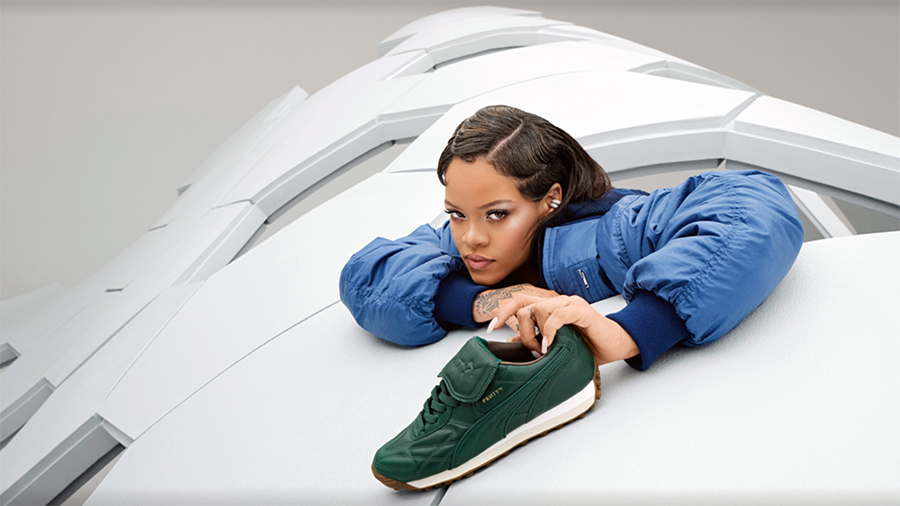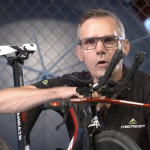Puma Group sales decreased 9.8 percent, or 4.0 percent in constant-currency (CC) terms, to €1.98 billion in the fourth quarter, with sales in the Americas “significantly impacted” by the devaluation of the Argentine peso and Europe hurt by higher retail inventories.
- Americas region sales declined 6.4 percent CC to €846.0 million.
- EMEA region sales decreased 5.2 percent CC to €667.9 million, said to be mainly due to generally higher inventory levels in the market, resulting in lower sell-in while the sell-through remained strong.
- Asia/Pacific region sales increased 2.8 percent CC to €468.3 million, supported by strong growth in Greater China and India. The rest of Asia was softer, impacted by consumer sentiment and warm weather conditions.
Puma’s Wholesale business declined 8.7 percent CC to €1.36 billion. While reported sales growth was negative due to the devaluation of the Argentine peso, the underlying sales performance was said to be flattish, reflecting higher inventory levels in the trade, resulting in lower sell-in while sell-through remained strong.
The Direct-to-Consumer (DTC) business grew 8.0 percent CC to €627.2 million, with underlying sales growth similar to the previous quarter.
Sales growth by product division was diluted by the devaluation of the Argentine peso. On an underlying operating basis, Puma said it continued to see strong demand, especially for its performance categories Football, Basketball, Golf and Performance Running.
- Footwear sales declined 12.3 percent (-5.5 percent CC) to €1.03 billion.
- Apparel sales decreased 10.3 percent (-5.9 percent CC) to €657.4 million.
- Accessories sales grew 3.5 percent (+7.3 percent CC) to €292.9 million.
Gross margin improved by 290 basis points to 47.0 percent of sales, compared to 44.0 percent in Q4 2022. Currencies reportedly continued to be a strong headwind, which was said to be more than offset by tailwinds from fewer promotional activities, price adjustments as well as favorable sourcing and freight costs.
Operating expenses (OPEX) decreased 9.7 percent in euro terms year-over-year to €848.0 million, reportedly due to strict cost discipline in non-demand generating cost areas and despite continued growth in the DTC channel and regional inflationary pressures. The OPEX ratio remained flat at 42.8 percent (Q4 2022: 42.7 percent).
The operating result (EBIT) was up 133.0 percent in euro terms to €94.4 million, compared to €40.5 million in Q4 2022, despite the Argentine peso devaluation, which the company said “reflects the underlying operational strength of the Puma Group.” The improvement was reportedly achieved through the “gross profit margin and strict cost discipline.” As a result, the EBIT margin improved to 4.8 percent of sales in Q4, compared to 1.8 percent in the prior-year quarter.
The financial result decreased to a loss of €67.1 million. compared to a loss of €26.0 million in Q4 2022, said to be mainly due to negative currency conversion effects, including the valuation losses from the devaluation of the Argentine peso.
Net income decreased 42.3 percent in euro terms to €0.8 million, or €0.01 a share, in Q4, compared to €1.4 million, or €0.01 a share, in the 2022 fourth quarter.
Full Year 2023
Puma Group sales increased 1.6 percent (+6.6 percent CC) to €8.60 billion in full-year 2023, driven by the Asia/Pacific region with a 13.6 percent CC increase in sales, closely followed by the EMEA region with a 13.4 percent CC increase in sales. Sales in the Americas region decreased by 2.4 percent CC due to the devaluation of the Argentine peso. The Puma Group said it had a negative currency translation impact of more than €400 million.
The Wholesale business was up 3.5 percent CC to €6.47 billion in 2023.
The DTC business increased by 17.5 percent CC to €2.13 billion for the year. Sales in owned & operated retail stores reportedly increased 18.8 percent CC and e-commerce increased 15.0 percent CC. Puma said this resulted in an increased DTC share of 24.8 percent of total revenue in 2023, compared to 23.1 percent in fiscal 2022, which was said to be back in line with the pre-Covid level.
Footwear continued to lead the growth with 12.4 percent CC followed by Accessories with growth of 3.1 percent CC, while Apparel remained flat (-0.3 percent CC).
Gross margin increased by 20 basis points to 46.3 percent of sales in 2023. Currencies and industry-wide promotional activities were headwinds to the gross profit margin. These headwinds were said to be more than offset by price adjustments and favorable geographical and distribution channel mix effects.
OPEX increased 3.3 percent to €3.40 billion, compared to €3.30 billion in 2022. The increase was said to be driven by sales-related distribution and other variable costs, the growth of the company’s DTC channel and continued investment in marketing. The company said this was partially offset by operating leverage in other cost areas due to strict cost discipline. The OPEX ratio increased by 60 basis points to 39.6 percent of sales in 2023.
EBIT for the year decreased 3.0 percent to €621.6 million, compared to €640.6 million in 2022, reportedly due to slightly higher operating expenses, partially offset by a favorable gross margin. As a result, the EBIT margin amounted to 7.2 percent of sales in 2023, compared to 7.6 percent of sales in 2022.
The financial result expanded to a loss of €143.3 million in 2023, compared to a loss of €88.9 million in 2022, said to be mainly due to negative currency conversion effects, including the valuation losses from the devaluation of the Argentine peso.
Tax expenses were at €117.8 million for the year, compared to €127.4 million in fiscal 2022. The tax rate was at a normalized level of 24.6 percent.
Net income for the year decreased 13.7 percent to €304.9 million, or €2.03 per share, compared to €353.5 million, or €2.36 per share in fiscal 2022.
Balance Sheet
Puma had cash and cash equivalents of €552.9 million at year-end, an increase of 19.4 percent compared to 2022.
The Puma Group had credit lines totaling €1.55 billion as of December 31, 2023. Unutilized credit lines were at €986.1 million on the balance sheet date compared to €943.7 million at the end of 2022.
Working Capital increased by 8.3 percent to €1.18 billion at year-end.
Inventories were down by 19.6 percent to €1.80 million at year-end, compared to €2.25 billion at the prior year-end, said to be the result of previously taken measures to rightsize inventories and is also supported by last year’s high comparative base.
Trade Receivables increased by 5.0 percent to €1.12 billion at year-end.
Trade payables decreased by 13.6 percent to €1.50 billion.
Cash Flow and Liquidity
Free cash flow reportedly “increased significantly,” expanding 107.9 percent to €369.0 million in 2023.
Proposal of a Dividend of €0.82 per share
The positive net income enables the Management Board and the Supervisory Board of Puma SE to propose to the Annual General Meeting on 22 May 2024 the distribution of a dividend of €0.82 per share for the financial year 2023. This corresponds to a payout ratio of 40.3 percent of consolidated net income. The higher payout ratio is a result of the strong improvement in free cash flow and reflects the underlying positive operating business development. The payment of the dividend is scheduled to take place in the days following the Annual General Meeting at which the dividend is approved. In the previous year, a dividend of €0.82 per share was paid out (payout ratio for the previous year: 34.7 percent).
Outlook 2024
Puma SE said it expects geopolitical and macroeconomic headwinds as well as currency volatility to persist in 2024. These conditions already led to muted consumer sentiment and volatile demand in 2023 and it expect these effects to continue in 2024, particularly in the first half of the year.
“In this continued challenging environment, we are fully focused on executing our strategic priorities: elevating the brand, increasing product excellence and improving our distribution quality – especially in the key markets U.S. and China,” the company write in its report. “For us, 2024 is not only the year of sport with major events such as the Olympic Games, UEFA Euro 2024 and the Copa America providing the perfect platform to showcase our strong product innovation and credibility as a performance brand. It is also the year in which Puma will invest into its first global brand campaign in 10 years to sharpen its positioning as the fastest sports brand in the world.”
Puma said it expects to achieve mid-single-digit sales growth in constant-currency terms and an operating result (EBIT) in the range of €620 million to €700 million for the financial year 2024. The outlook assumes that the future devaluation of the Argentine peso will be fully compensated by corresponding price increases in Argentina. Puma expects net income to change in 2024 in line with the operating result.
“Going into 2024, we see that the market environment remains challenging,” shared Arne Freundt, CEO, Puma SE. “As we are working through this ongoing challenging trade environment together with our retail partners with a clear focus on sell-through and prudent sell-in especially in the U.S. and Europe, we expect a softer first half of the year. The persistent adverse currencies will also continue to be a pressure on the profitability in the first half 2024. On the back of great product newness and ongoing brand momentum, we expect an improvement quarter-over-quarter.”
Image courtesy Puma
















